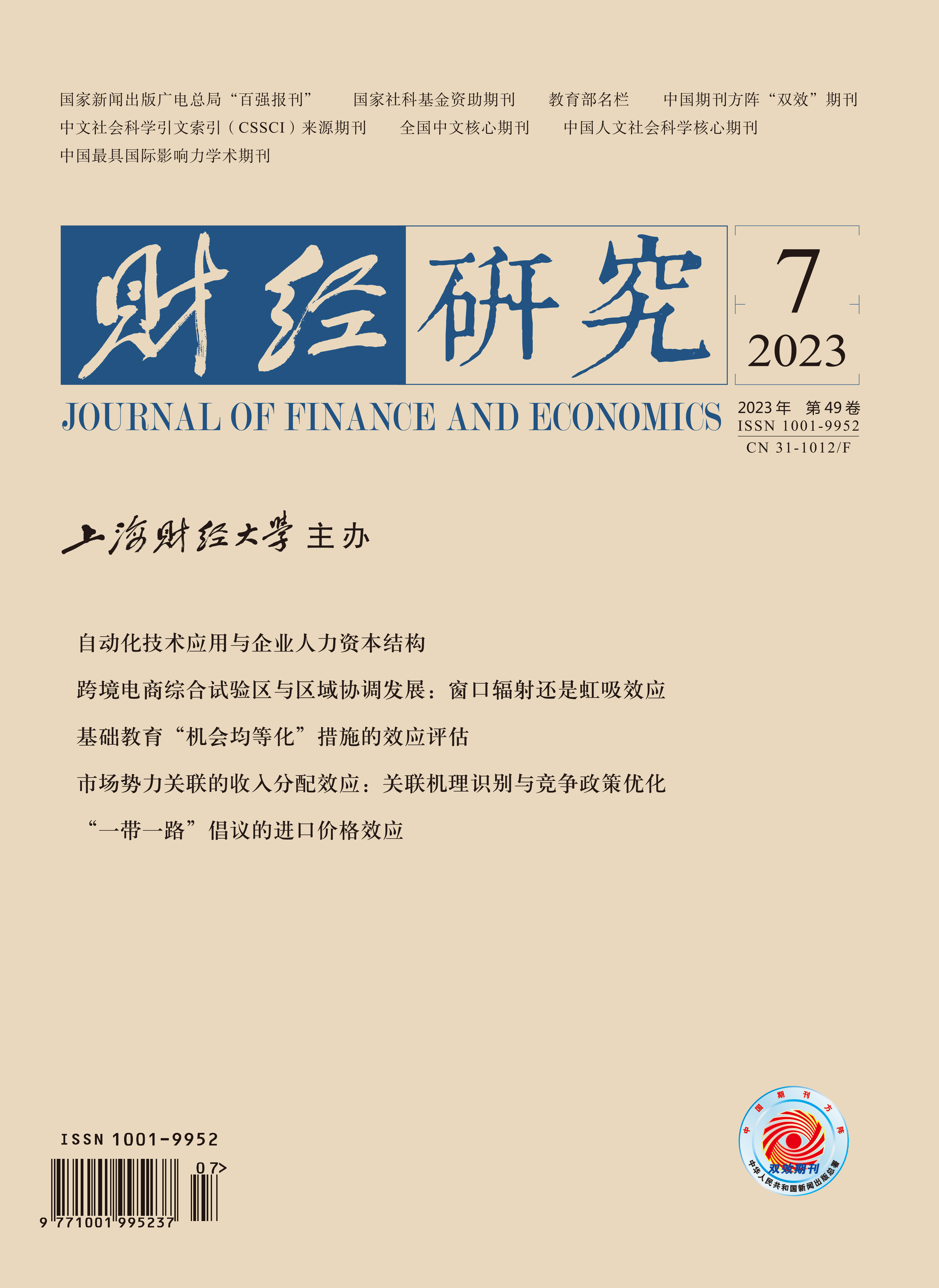当公司并购面对家族企业代际传承复杂性时,“基业长青”的初心是否会遭遇挑战和不确定性?文章基于代际传承多阶段演进的视角,考察了家族企业并购行为的内在机理与影响机制。研究发现,进入传承准备期的家族企业呈现稳健的并购风格,更愿实施与主业关联的并购,并购的长期表现也更好。这一结果在创始人培养二代接班人共治阶段表现尤为显著。而当二代接班上位治理时,并购风格转向激进,并购规模强度更高,且倾向于跨界并购。两代人之间的冲突与磨合凸显认知和经历的差异,产生截然相反的并购影响;在接班人培养期间,多位二代成员共同竞争会强化并购行为,而女性家族成员接棒企业后,并购相对趋于稳健。文章的研究将代际传承复杂多阶段特征、家族企业授权分配与公司并购有机结合,拓展和深化了家族企业代际传承场景下的公司财务理论,揭示了传承有序、经营有方对家族企业稳定繁荣的重要性。
代际传承与家族企业并购行为:基于传承多阶段演进视角
摘要
参考文献
1 蔡庆丰,陈熠辉,吴杰. 家族企业二代的成长经历影响并购行为吗−基于我国上市家族企业的发现[J]. 南开管理评论,2019,(1):139−150. DOI:10.3969/j.issn.1008-3448.2019.01.013
3 陈冬华,李真. 乡土与城邦[J]. 会计研究,2015,(1):4−14. DOI:10.3969/j.issn.1003-2886.2015.01.002
5 陈胜蓝,马慧. 卖空压力与公司并购−来自卖空管制放松的准自然实验证据[J]. 管理世界,2017,(7):142−156. DOI:10.3969/j.issn.1002-5502.2017.07.012
7 姜付秀,张敏,刘志彪. 并购还是自行投资:中国上市公司扩张方式选择研究[J]. 世界经济,2008,(8):77−84. DOI:10.3969/j.issn.1002-9621.2008.08.007
10 刘白璐,吕长江. 基于长期价值导向的并购行为研究−以我国家族企业为证据[J]. 会计研究,2018,(6):47−53. DOI:10.3969/j.issn.1003-2886.2018.06.007
20 Bammens Y, Hünermund P. Nonfinancial considerations in eco-innovation decisions: The role of family ownership and reputation concerns[J]. Journal of Product Innovation Management,2020,37(5): 431−453. DOI:10.1111/jpim.12550
21 Berrone P, Cruz C, Gomez-Mejia L. Socioemotional wealth in family firms: Theoretical dimensions, assessment approaches, and agenda for future research[J]. Family Business Review,2012,25(3): 258−279. DOI:10.1177/0894486511435355
22 Brigham K H, Lumpkin G T, Payne G T, et al. Researching long-term orientation: A validation study and recommendations for future research[J]. Family Business Review,2013,27(1): 72−88.
23 Brockner J, Higgins E T. Regulatory focus theory: Implications for the study of emotions at work[J]. Organizational Behavior and Human Decision Processes,2001,86(1): 35−66. DOI:10.1006/obhd.2001.2972
24 Buist K L, Vermande M. Sibling relationship patterns and their associations with child competence and problem behavior[J]. Journal of Family Psychology,2014,28(4): 529−537. DOI:10.1037/a0036990
25 Chang S J, Shim J. When does transitioning from family to professional management improve firm performance?[J]. Strategic Management Journal,2015,36(9): 1297−1316. DOI:10.1002/smj.2289
26 Chen W R, Miller K D. Situational and institutional determinants of firms’ R&D search intensity[J]. Strategic Management Journal,2007,28(4): 369−381. DOI:10.1002/smj.594
27 Chirico F, Gómez-Mejia L R, Hellerstedt K, et al. To merge, sell, or liquidate? Socioemotional wealth, family control, and the choice of business exit[J]. Journal of Management,2020,46(8): 1342−1379. DOI:10.1177/0149206318818723
28 Chrisman J J, Patel P C. Variations in R&D investments of family and nonfamily firms: Behavioral agency and myopic loss aversion perspectives[J]. Academy of Management Journal,2012,55(4): 976−997. DOI:10.5465/amj.2011.0211
29 Cruz C, Justo R. Portfolio entrepreneurship as a mixed gamble: A winning bet for family entrepreneurs in SMEs[J]. Journal of Small Business Management,2017,55(4): 571−593. DOI:10.1111/jsbm.12341
30 De Massis A, Audretsch D, Uhlaner L, et al. Innovation with limited resources: Management lessons from the German Mittelstand[J]. Journal of Product Innovation Management,2018,35(1): 125−146. DOI:10.1111/jpim.12373
31 De Massis A, Frattini F, Kotlar J, et al. Innovation through tradition: Lessons from innovative family businesses and directions for future research[J]. Academy of Management Perspectives,2016,30(1): 93−116. DOI:10.5465/amp.2015.0017
32 Duran P, Kammerlander N, Van Essen M, et al. Doing more with Less: Innovation input and output in family firms[J]. The Academy of Management Journal,2016,59(4): 1224−1264.
33 Eriksen S, Gerstel N. A Labor of love or labor itself: Care work among adult brothers and Sisters[J]. Journal Family Issues,2002,23(7): 836−856. DOI:10.1177/019251302236597
34 Fan J P H, Wong T J, Zhang T Y. Founder succession and accounting properties[J]. Contemporary Accounting Research,2012,29(1): 283−311. DOI:10.1111/j.1911-3846.2011.01099.x
35 Fang H Q, Memili E, Chrisman J J, et al. Narrow-framing and risk preferences in family and non-family firms[J]. Journal of Management Studies,2021,58(1): 201−235. DOI:10.1111/joms.12671
36 Gómez-Mejía L R, Haynes K T, Núñez-Nickel M, et al. Socioemotional wealth and business risks in family-controlled firms: Evidence from Spanish olive oil mills[J]. Administrative Science Quarterly,2007,52(1): 106−137. DOI:10.2189/asqu.52.1.106
37 Gomez-Mejia L R, Campbell J T, Martin G, et al. Socioemotional wealth as a mixed gamble: Revisiting family firm R&D investments with the behavioral agency model[J]. Entrepreneurship Theory and Practice,2014,38(6): 1351−1374. DOI:10.1111/etap.12083
38 Gong Y P, Law K S, Chang S, et al. Human resources management and firm performance: The differential role of managerial affective and continuance commitment[J]. Journal of Applied Psychology,2009,94(1): 263−275. DOI:10.1037/a0013116
39 Grote J. Conflicting Generations: A new theory of family business rivalry[J]. Family Business Review,2003,16(2): 113−124. DOI:10.1111/j.1741-6248.2003.00113.x
40 Halkias D, Thurman P W, Nason R S. Father-daughter succession in family business[M]. London: Routledge Press, 2011.
41 Henrich J. Rice, psychology, and innovation[J]. Science,2014,344(6184): 593−594. DOI:10.1126/science.1253815
42 Higgins E T. Beyond pleasure and pain[J]. The American Psychologist,1997,52(12): 1280−1300. DOI:10.1037/0003-066X.52.12.1280
43 Hoskisson P E, Chirico F, Zyung D, et al. Managerial risk taking: A multitheoretical review and future research Agenda[J]. Journal of Management,2017,43(1): 127−169.
44 Huang X, Chen L, Xu E R C, et al. Shadow of the prince: Parent-incumbents’ coercive control over child-successors in family organizations[J]. Administrative Science Quarterly,2020,65(3): 710−750. DOI:10.1177/0001839219870449
45 Jehn K A, Mannix E A. The dynamic nature of conflict: A longitudinal study of intragroup conflict and group perfor- mance[J]. Academy of Management Journal,2001,44(2): 238−251. DOI:10.2307/3069453
46 Matzler K, Veider V, Hautz J, et al. The impact of family ownership, management, and governance on innovation[J]. Journal of Product Innovation Management,2015,32(3): 319−333. DOI:10.1111/jpim.12202
47 Michalism M D, Karau S J, Tangpong C. Top management team cohesion and superior industry returns: An empirical study of the resource-based view[J]. Group & Organization Management,2004,29(1): 125−140.
48 Roberts S G. Commentary: Large-scale psychological differences within China explained by rice vs. wheat agriculture[J]. Frontiers in Psychology,2015,6: 950.
49 Smythe J, Sardeshmukh S R. Fathers and daughters in family business[J]. Small Enterprise Research,2013,20(2): 98−109. DOI:10.5172/ser.2013.20.2.98
50 Tversky A, Kahneman D. Advances in prospect theory: Cumulative representation of uncertainty[J]. Journal of Risk and Uncertainty,1992,5(4): 297−323. DOI:10.1007/BF00122574
51 Westwood R. Harmony and Patriarchy: The cultural basis for ‘paternalistic headship’ among the overseas Chinese[J]. Organization Studies,1997,18(3): 445−480. DOI:10.1177/017084069701800305
52 Xu N H, Yuan Q B, Jiang X Y, et al. Founder’s political connections, second generation involvement, and family firm performance: Evidence from China[J]. Journal of Corporate Finance,2015,33: 243−259. DOI:10.1016/j.jcorpfin.2015.01.004
53 Yaghoub R, Yaghoubi I M, Locke S, et al. Mergers and acquisitions: A review. Part 1[J]. Studies in Economics and Finance,2016,33(1): 147−188. DOI:10.1108/SEF-03-2015-0078
引用本文
许宇鹏, 徐龙炳. 代际传承与家族企业并购行为:基于传承多阶段演进视角[J]. 财经研究, 2023, 49(7): 138-152.
导出参考文献,格式为:





 7755
7755  8730
8730

